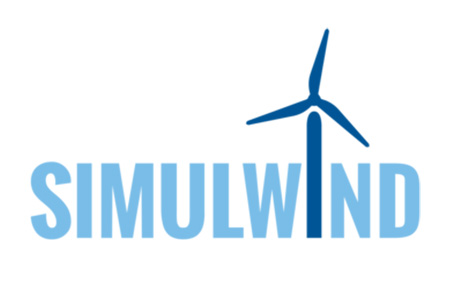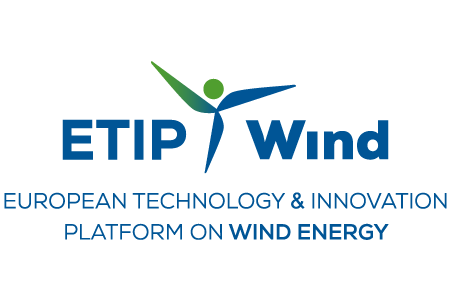|
News from WindEurope projects


The Corewind project will hold its first public workshop in Marseille on 21 April at Floating Offshore Wind Turbines (FOWT) 2020, the largest event dedicated to floating offshore wind. WindEurope and partners will present the results of the initial studies and will discuss with industry how to progress on the development of floating systems.
Could you support us with your knowledge and expertise?
Get in touch with Sabina Potestio and we will set up an interview!
About Corewind: The Corewind project, focusing on the development of innovative and cost-effective solutions for floating offshore wind, is now working on the state-of-the-art of mooring, anchoring and dynamic cables system designs. This will ensure that innovations developed in the project will account for current industry practices and latest know-how.


The SIMULWIND project came to an end in December 2019. The final version of the simulator is available on the project website. Moreover, the website hosts a users’ platform to exchange ideas and experiences over the tool.
About SIMULWIND: This was an ambitious European-funded project (ERASMUS + programme) which developed a virtual reality (VR) maintenance simulator for training operation and maintenance (O&M) professionals. The simulator is a customisable and adaptable tool that can be adapted to the various training needs and types of wind turbines.


ETIPWind, the European Technology and Innovation Platform for wind, launched its Roadmap during WindEurope’s Offshore 2019 event in Copenhagen. The report provides technology solutions and research priorities that will drive the development of wind energy and help reduce costs across the supply chain. It is available on the website as a pdf or in an interactive format.
About ETIPWind: ETIPWind works to define and agree on concrete research and innovation (R&I) priorities and communicate these to the European institutions and other decision-making bodies in order to support the EU’s ambition of a decarbonised economy by 2050.


The first WindHarmony results are available in a database which gathers up to date information on administrative procedures, legislation and standards and certification procedures on health and safety for wind available in EU 28. The database is open to everyone free of charge.
The project is now planning the last two public workshops to validate topics for potential harmonisation and identify intervention for each of the health and safety topics, which may include harmonisation or standardisation at the European level. This is a significant moment for the industry to improve the health and safety performance of wind energy and influence the European Commission’s future priorities in this field. The first workshop is planned for 13 March 2020 in Paris.
For more information on the project and on how to get involved, please contact Dorina Iuga.
About WindHarmony: The WindHarmony project looks at health and safety (H&S) regulations and related standards impacting onshore and offshore wind energy across in Europe. It assesses and prioritises their potential for harmonisation or other type of intervention at European level.
Upcoming EU funding opportunities and Research & Innovation policy

In November, the European Maritime and Fisheries Fund launched a new call to support the sustainable development of blue economy SMEs across the European Union. Under the Blue Economy Window call, SMEs can apply as single entities or consortia. The overall budget is €22.5 million.
Application deadline: 27 February 2020.
In December, the European Commission opened six energy-related calls for proposals under the 2018-2020 Horizon 2020 Work Programme. A total of €83 million of EU funding is available. The detail on these calls and their focus are available in the WindEurope Members’ Area.
Proposal deadline: 21 April 2020.

The Connecting Europe Facility (CEF) is the key EU funding instrument that targets infrastructure investment at European level. Since 2014 it has been supporting cross-border transmission and storage projects for electricity, natural gas and CO2. The projects supported under the CEF are known as Project of Common interest (PCIs). PCIs get grants for construction and a special status to accelerate the consenting and permitting process.
For the next programming period 2021-2027 there is a political agreement to include a new window under CEF Energy for cross-border projects in the field of renewable energy generation. A total of 15% of the final CEF energy budget is earmarked for the initiative subject to market uptake.
Provided that they prove Member State cooperation and EU added value, the following types of project (in the form of studies or works) are eligible for funding:
- Individual project with physical cross-border impact (e.g. dispatchable power in country A reducing grid congestion in country B);
- Individual project with no physical cross-border impact (e.g. two distant countries jointly financing a wind park via cooperation mechanism);
- Multiple projects which might not necessarily have a physical cross-border impact (e.g. joint support scheme usually in connection with a statistical transfer).
Furthermore, the CEF agreement strengthens the provisions on synergy actions combining investments across sectors (energy, transport, digital). As of 2021, specific synergy work programmes can be established. The necessity to constitute a priority action on both ends will be replaced by provisions that allow a project eligible for CEF in one sector to be combined with an investment of up to 20% of eligible costs in another sector. This should allow the revised CEF to support sector integration.
The European Commission is now collecting concrete project ideas for the first call, which is planned in 2021. WindEurope is organising the input of the wind industry for the European Commission. If you have a project that meets the above-mentioned conditions and is seeking economic support, please get in touch with Sabina Potestio.

For the 2021-2027 programming period, the LIFE programme will be supporting the market uptake of clean energy solutions via a new sub-programme – Clean energy transition. Previously the funding for market uptake initiatives was under Horizon 2020. The provisional budget for the new sub-programme is €1bn.
The overarching objective of the Clean energy transition sub-programme is building capacity to create the right market and regulatory conditions for the energy transition. The scope includes both renewable energy and energy efficiency.
The European Commission is now fine-tuning the preparation of the consultation that should be launched beginning of February here. The consultation will allow potential beneficiaries to have a say on the design of the funding mechanism.

The Innovation Fund, the key EU funding programme for demonstration of innovative low-carbon technologies, will be issuing its first call for projects this year. The final design of the funding scheme is still underway:
- The definition of the selection criteria has almost been completed. The Innovation Fund Delegated Regulation lists the elements for projects to access funding;
- The European Commission will run expert workshops to further detail the selection criteria of projects. These will focus on the methodology definition of GHG emission avoidance (5-6 February) and the relevant costs definition to be covered by the Innovation Fund (2nd week of March);
- The European Commission is gathering data about potential projects.
- WindEurope has been coordinating the input from members regarding potential projects and technologies that could be eligible for funding. If you are interested in knowing more, or have projects that you would like to promote, please get in touch with Sabina Potestio.

The European Commission unveiled the Sustainable Europe Investment Plan, the financial pillar of the European Green Deal. The EU aims to mobilise €1 trillion in investments over the next 10 years to support the transition towards climate neutrality by 2050 through various financial instruments: InvestEU, the Just Transition Mechanism, the ETS Funds (Innovation and Modernisation Funds), national funding and the European Investment Bank.
The Just Transition Mechanism will mobilise €100 billion over the period 2021 to 2027 to help fossil-fuel intensive regions transition towards sustainable technologies. It leans on 3 pillars: a Just Transition Fund; a guarantee scheme under the InvestEU programme relying on private investments; and a public loan facility formed of EU budget and European Investment Bank loans for local and regional authorities.
The Just Transition Fund will receive €7.5 billion of EU funds. Member States are to define eligible regions through dedicated territorial just transition plans. They will have to match each euro from the Just Transition Fund with a minimum of €1.5 and a maximum of €3 from the European Regional Development Fund and the European Social Fund, and provide additional national co-financing according to cohesion policy rules. It will mostly support workers to develop skills and competences for the job market of the future and help SMEs, start-ups and incubators to create new economic opportunities in these regions. The money will be accessible at national level as from 2021, once the regions and plans are defined in agreement with the European Commission.

The Commission’s proposal for Horizon Europe is an ambitious €94.1 billion research and innovation programme to succeed Horizon 2020. It will focus on three pillars: excellent science, global challenges, and European industrial competitiveness and innovative Europe.
The EU’s long-term budget, the Multiannual Financial Framework, is under negotiation. Regarding Horizon Europe, the Finnish presidency in 2019 proposed a 2.98% cut, resulting in a budget of €84,013 billion.
For more information contact Sabina or Dorina.
| Legal notice: The views represented in this newsletter are those of its authors and do not represent the views or official position of the European Commission. |
 |
|